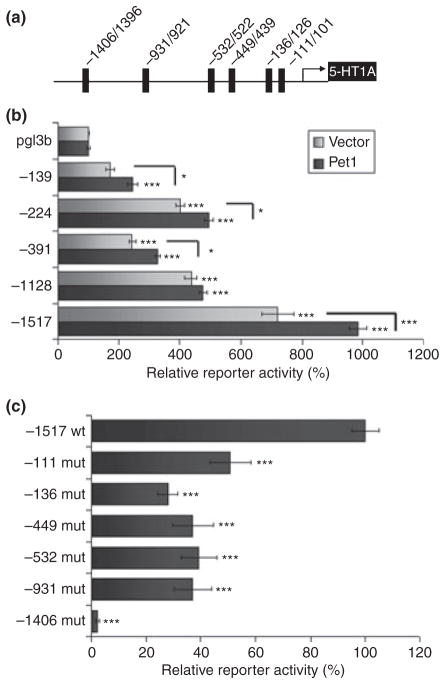Fig. 3.
Human Pet-1 activates transcription through multiple Pet-1 elements in the human 5-HT1A promoter. (a) Map showing position of Pet-1 elements in the 5-HT1A promoter. (b) Transcriptional activity of Pet-1 on 5-HT1A promoter constructs containing increasing lengths of promoter sequence in human embryonic kidney cells (HEK293 cells). Pet-1 activation is strongest for the longest construct that contains all of the putative Pet-1 elements (−1517). Luciferase activity was normalized to β-galactosidase activity and expressed as percent of pGL3B vector (100%). (c) Co-transfection of Pet-1 with wild-type and mutated −1517 bp 5-HT1A promoter reporter constructs. Pet-1-mediated transcriptional activation of the 5-HT1A promoter construct is significantly reduced when any of the putative Pet-1 binding elements is mutated. Luciferase/β-galactosidase activity ratio is expressed as percent of activity of the non-mutated −1517 construct. Error bars represent SEM. ***p < 0.0005, **p < 0.005, *p < 0.05; N = 4.

